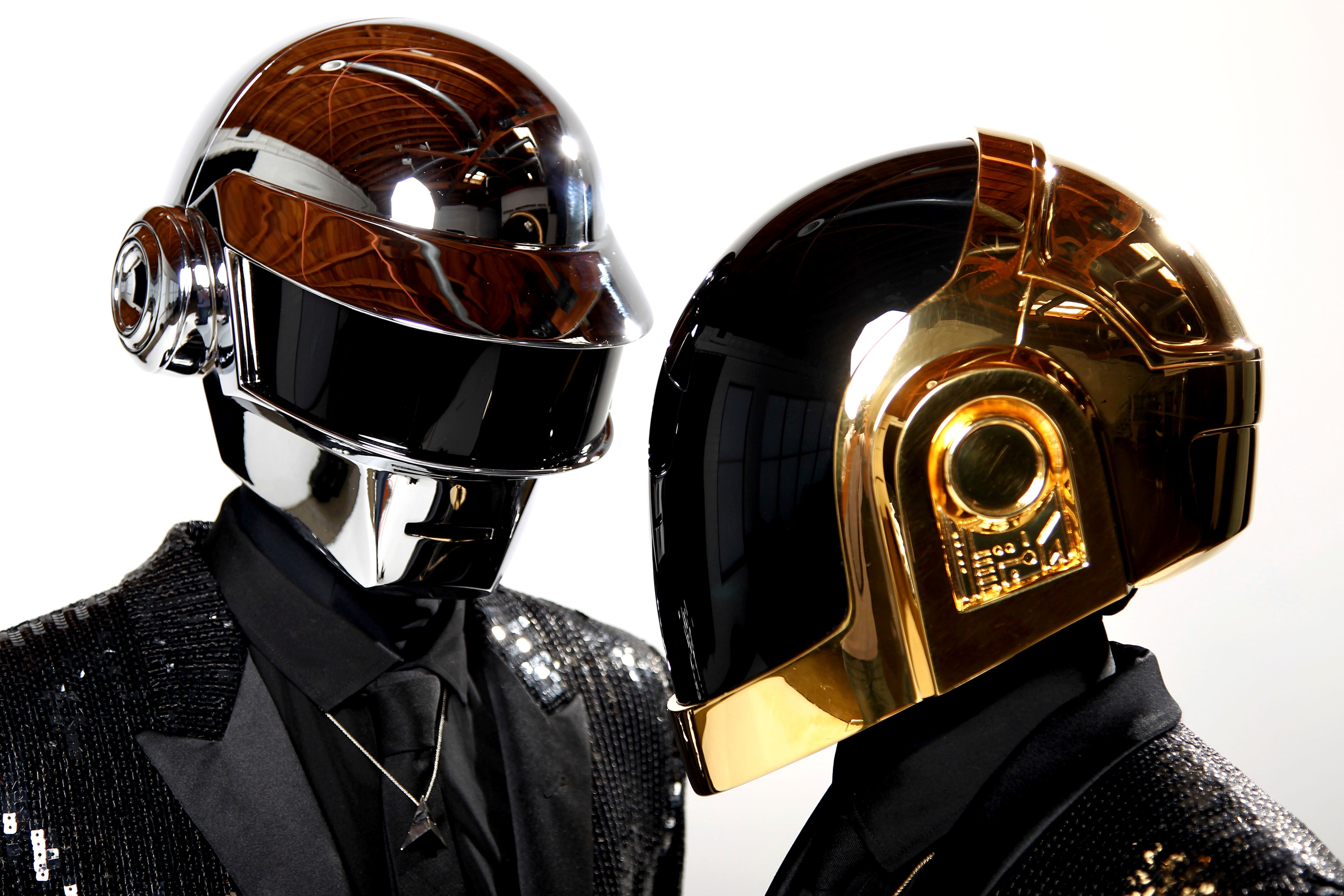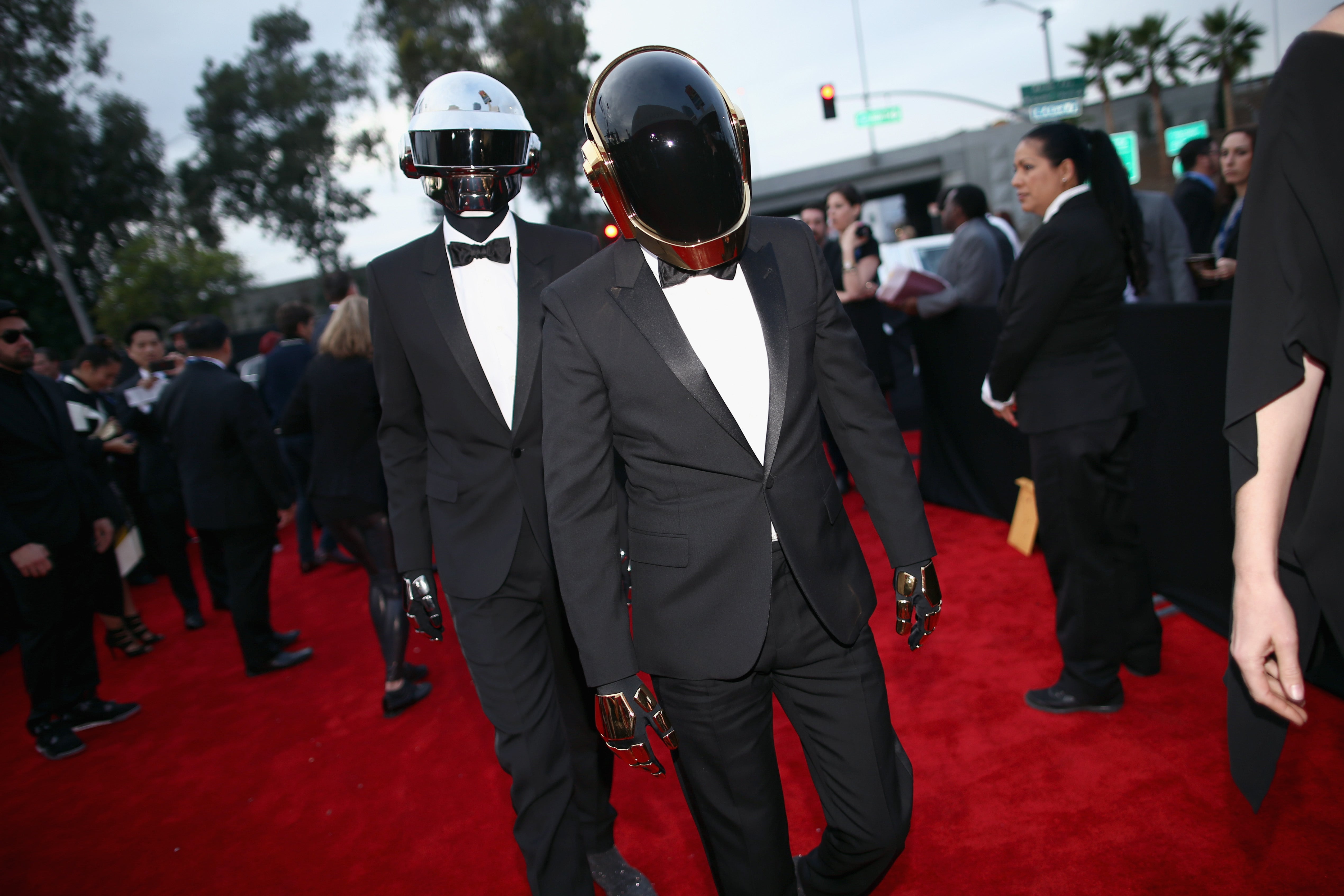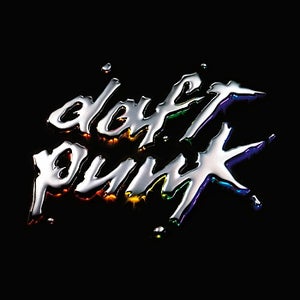Celebratory, emotive, relentlessly cheesy: Daft Punk’s Discovery at 20
The French dance duo broke up this week, just ahead of the 20th anniversary of their album that introduced their masked alter egos to the world. Ed Power salutes a 2001 marvel

Your support helps us to tell the story
From reproductive rights to climate change to Big Tech, The Independent is on the ground when the story is developing. Whether it's investigating the financials of Elon Musk's pro-Trump PAC or producing our latest documentary, 'The A Word', which shines a light on the American women fighting for reproductive rights, we know how important it is to parse out the facts from the messaging.
At such a critical moment in US history, we need reporters on the ground. Your donation allows us to keep sending journalists to speak to both sides of the story.
The Independent is trusted by Americans across the entire political spectrum. And unlike many other quality news outlets, we choose not to lock Americans out of our reporting and analysis with paywalls. We believe quality journalism should be available to everyone, paid for by those who can afford it.
Your support makes all the difference.Daft Punk had one final trick up their chrome-sheathed sleeves as they bid the world au revoir after 28 years of pop perfection this week. The announcement that the French electro duo were calling it quits brought a powerful sense of nostalgia for the days when band break-ups consistently made headline news. Even those who hadn’t listened to the robo-headed duo since 2013 global funk smash “Get Lucky” may have found themselves hit harder than expected by the bombshell. Did Daft Punk really mean that much to us?
Yes, it turns out. And one of the reasons the pair – Thomas Bangalter (who appeared in public dressed as a tall C-3PO-esque “robot”) and Guy-Manuel de Homem-Christo (the shorter, R2-D2 half of the equation) – were so beloved was their extraordinary second album, Discovery, which has its 20th anniversary next week (12 March). Celebratory, emotive, relentlessly cheesy, 2001’s Discovery was Daft Punk at their most expansive and joyous. It drew on disco, prog, R&B and garage, and slathered it all in layers of wistfulness for childhood.
It’s also the one when they pretended to be the robots for the first time, after years of testing out various costumes. That nostalgic sensibility, meanwhile, extended to the accompanying videos – anime mini-epics directed by Kazuhisa Takenouchi, working with manga maestro Leiji Matsumoto. That led to 2003’s feature-length film Interstella 5555: The 5tory of the 5ecret 5tar 5ystem, a story by Daft Punk overseen by Takenouchi and with Discovery as the soundtrack.

Through the years that followed, Discovery’s mystique endured. In 2007, for instance, Kanye West sampled the vocals from fourth track “Harder, Better, Faster, Stronger”, itself built around a sample of 1979’s “Cola Bottle Baby”, by experimental Los Angeles jazz keyboardist Edwin Birdsong. West’s track would go to No 1 in the UK and America, expanding Daft Punk’s fanbase and once again reminding us of their genius.
But to say Discovery contains multitudes massively undersells its charms. It begins with one of the classic Daft Punk singles in the rhapsodic “One More Time” and finishes with the pummelling house epic “Too Long”. In between, the record delivers pure, headlong escapism, combining the thrill of the dancefloor with the mind-expanding effects of a Barbarella-Star Wars double-bill.
As with all classic albums, Discovery sweeps the listener away to a world of its own devising. Its pop-culture fantasia has one foot in a magical 1970s, as perceived through the eyes of the young Bangalter and de Homem-Christo, and one in a pulpy sci-fi future. This had been the plan from the beginning of the recording process, as Daft Punk stated at the time.

“We think the music we made on Discovery has been done in a cinematic way in our minds,” Bangalter told Remix magazine in 2001. “We were visually seeing the music and trying to find ideas that were appealing to people’s imagination.”
It was a clear step on from Homework, Daft Punk’s 1997 debut – music for the club assembled in the bedroom of Bangalter’s Paris home (hence the title) using relatively rudimentary equipment. Discovery, by contrast, was music for the heart – ample soulfulness with little concern for “cool”, as demonstrated by its deployment of a Barry Manilow sample on “Superheroes”.
“The spirit of house music is about questioning yourself and trying different things,” continued Bangalter, consistently the chattier of the pair. “While we might have some disco influences, we decided to go further and bring in all the elements of music that we liked as children, whether it’s disco, electro, heavy metal, rock or classical.”

“Thomas is like the Steve Jobs of music,” says Philippe Ascoli, who encountered Daft Punk in the mid-1990s through his label Source France, in an interview. Daft Punk had contributed the track “Musique” to a Source compilation, though Ascoli would ultimately lose out to Virgin in the race for their signature. Later, as director of A&R at Virgin UK, he worked with them on 2005’s stripped-back Discovery follow-up, Human After All.
“He’s a ground-breaker, a magical songwriter. Everything he does is so simple. One thing I learned from both of them is that their music is their marketing. If you come with the right music you don’t need much more. There was a genius to it. It really was indie music with a ‘club’ attitude.”
That determination to not follow the rules was never more in evidence than when they returned to Bangalter’s bedroom studio – christened “Daft House” – in 1998 to start the follow-up to Discovery. One of the earliest tracks they produced was a 10-minute house epic “Too Long”, with vocals by Anthony Moore, aka “Romanthony”, a New Jersey deep house DJ, producer and vocalist.
But the prospect of cranking out another 14 or so relatively straight-ahead dance tunes didn’t fill them with joy. They wanted to make a record that would showcase all their influences – something that would be a genuine “Discovery” for fans expecting more of what they loved about Homework.
“Numerous musicians have inspired us,” Daft Punk explained in a 2001 interview with Cartoon Network conducted over email, “from Jimi Hendrix to AC/DC to John Williams to Stevie Wonder to Dr Dre to Basement Jaxx to The Who to the Beatles to Herbie Hancock to Supertramp and many more from electronic music, hip-hop, classical music and funk.
“Also, the Buggles song ‘Video Killed the Radio Star’ is a great track and will definitely become an even more important classic after many years go by.”
The restless spirit of Trevor Horn’s big-spectacled post-disco project indeed haunts Discovery, most explicitly on the vocodorised vocals of “Digital Love”.

Discovery was guided by artistic instinct rather than by commercial imperative, say those who know Daft Punk. “They always made the album they were ‘feeling’ at the time,” says Ascoli. “With Human After All … the way they went about it was completely natural. They came into my office and said, ‘OK we want to do this project but we don’t want to do any promotion. When we released our last album [Discovery] with Columbia it was released like a movie – a bit of a blockbuster.’ They’ve always known what they were doing.”
As befits a group that has carefully cultivated its own mythology, Discovery has accumulated its share of rumours across the decades. One is that Daft Punk completed opener “One More Time” in 1998 but then sat on it for two years to determine whether it achieved their ambition of creating a “timeless” tune. Coasting on a retro-production style and leaning into the sound of French “touch” (house) and its reliance on processed disco beats, “One More Time” achieved a sort of rocket-fuelled kitsch.
That timeless status is in little doubt 20 years later. “One More Time” has become retrospectively affecting for other reasons, too. In 2013, vocalist Anthony Moore passed away aged 45 due to complications from kidney disease.
“One More Time”’s use of auto-tune on Romanthony’s singing was hugely influential. Within a few years, it felt like at least 50 per cent of the charts featured what, prior to Daft Punk, had been widely known as the Cher “Believe” effect.
Kanye West was so floored that, offering devastated tribute to his late mother, he recorded LP, 2008’s 808’s & Heartbreak completely in auto-Tune.
Extraordinarily, however, Daft Punk’s new direction initially received something of a backlash. Rolling Stone said Discovery had a “muddled” sense of identity; Pitchfork dismissed its “prog and disco hybrid” as “relatively harmless”.
Daft Punk weren’t having it and were especially strident about the vocal FX. “A lot of people complain about musicians using auto-tune,” Bangalter told Remix. “It reminds me of the late 1970s when musicians in France tried to ban the synthesiser. What they didn’t see was that you could use those tools in a new way instead of just for replacing the instruments that came before.”
Discussing Discovery also means discussing Daft Punk’s “transformation” into robots. The duo’s oft-told origin story sees these two friends from suburban Paris playing in the rather flimsy indie band Darlin’ in the 1990s and described as purveyors of “daft punky thrash” in a withering Melody Maker review from 1993. From there, they begin mucking about with drum machines and samplers – a bedroom set-up DJ David Guetta would later describe as “two 8-tracks connected together [and] a ghetto blaster”.
Homework turned Bangalter and De Homem-Christo into stars in the dance world but the relative fame was not to their liking. Just how deeply it disagreed with them was made clear as they unveiled Discovery to the world via a video “press pack” for the benefit of the media. “Hello we are the robots,” went a caption along the screen as the pair made their entrance wearing shiny robot helmets. “We are Daft Punk. And we are made to make music and have fun.”
What happened to Thomas Bangalter and Guy-Manuel de Homem-Christo, another caption asks? “We don’t remember much about them but people say they contributed a lot to our success so we thank them deeply,” reads the reply.
On one level the robots were a gimmick. And they were also a way of keeping the world at bay and of preserving their anonymity. Yet they also spoke to the group’s apparent ambition with Discovery to give their electronic music a soul – to put the ghost into the machine.

“It’s a mix between the new chips we have in our brains and the fact we have a heart and a heartbeat,” said Bangalter in a 2001 interview with Japanese TV (conducted in full android-clobber). “[This] mixes the machine and the human side of what we are.”
This week’s break-up announcement – conveyed via recycled footage from the 2006 art-house film Daft Punk’s Electroma of one of the robots self-destructing in the desert – came out of the blue, and fans are now coming to terms with life without Daft Punk. As they process the news, Discovery is a reminder that, in addition to packing dance floors, they had a unique talent for making pop music seem like the silliest, most joyful, most important thing in the world.
For others, the final curtain call was merely an acknowledgement that Daft Punk had moved on. “I was not surprised they broke up,” says Philippe Ascoli, today a director with Paris indie label, Tôt ou tard. “ It’s been [eight] years [since their last album, Random Access Memories]. I assumed they were no longer doing music. What did surprise me was that they announced it. For me, Daft Punk was done a long time ago.”



Join our commenting forum
Join thought-provoking conversations, follow other Independent readers and see their replies
Comments